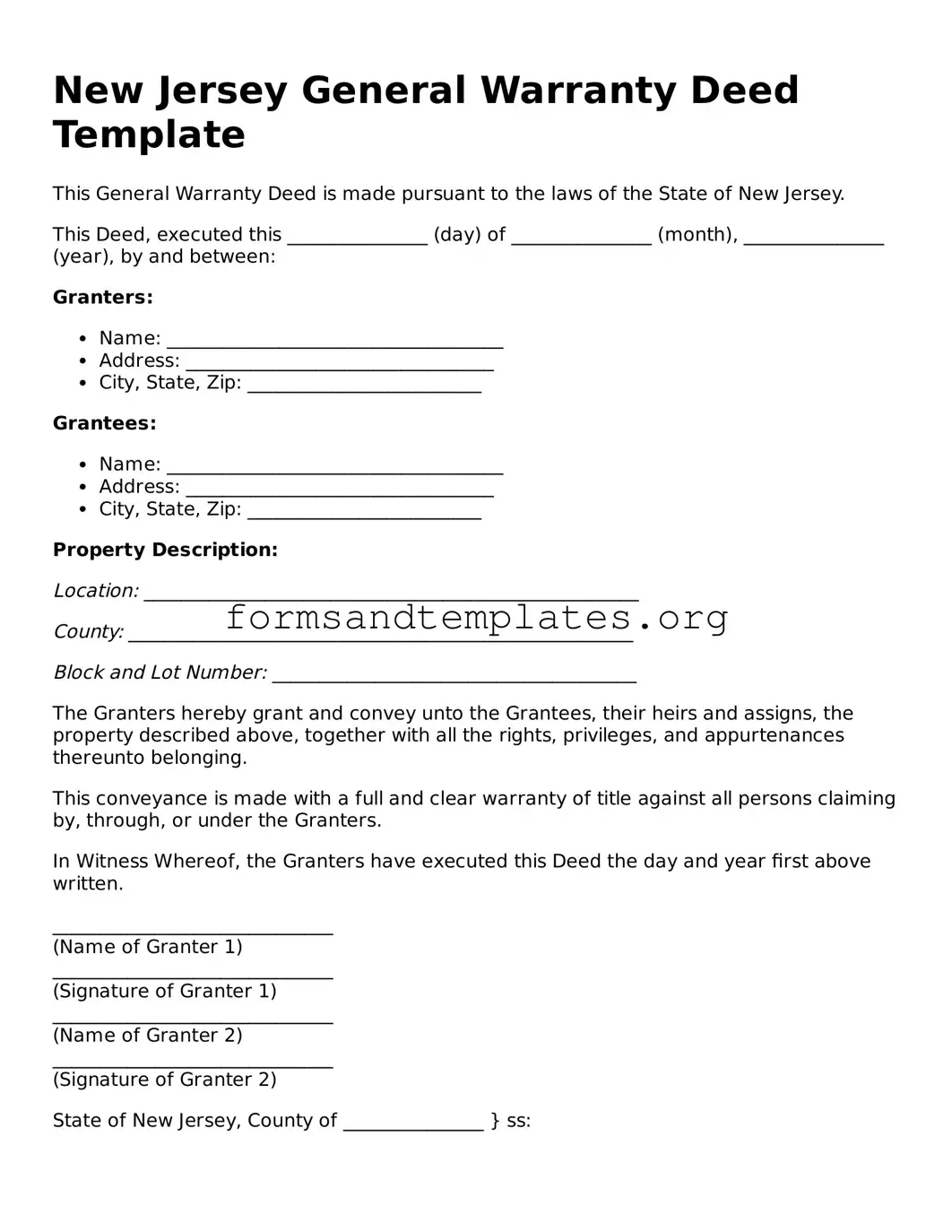New Jersey General Warranty Deed Template
This General Warranty Deed is made pursuant to the laws of the State of New Jersey.
This Deed, executed this _______________ (day) of _______________ (month), _______________ (year), by and between:
Granters:
- Name: ____________________________________
- Address: _________________________________
- City, State, Zip: _________________________
Grantees:
- Name: ____________________________________
- Address: _________________________________
- City, State, Zip: _________________________
Property Description:
Location: _____________________________________________________
County: ______________________________________________________
Block and Lot Number: _______________________________________
The Granters hereby grant and convey unto the Grantees, their heirs and assigns, the property described above, together with all the rights, privileges, and appurtenances thereunto belonging.
This conveyance is made with a full and clear warranty of title against all persons claiming by, through, or under the Granters.
In Witness Whereof, the Granters have executed this Deed the day and year first above written.
______________________________
(Name of Granter 1)
______________________________
(Signature of Granter 1)
______________________________
(Name of Granter 2)
______________________________
(Signature of Granter 2)
State of New Jersey, County of _______________ } ss:
On this _____ day of ___________, 20____, before me, a Notary Public in and for said County, personally appeared ______________________________, known to me to be the person(s) whose name(s) is/are subscribed to the within instrument, and acknowledged that they executed the same for the purposes therein contained.
______________________________
Notary Public
My Commission Expires: _______________
